At The Heart Of Fitbit’s New Features: Your Heart
Behind a wall of privacy dividers in a common space at Fitbit’s San Francisco headquarters, a young man in a surfing T-shirt and shorts—and an oxygen mask—is running on a treadmill. Its speed keeps increasing, compelling him to pick up his own pace.
“Let’s go! Let’s go!” barks a female observer by way of forceful encouragement, while another man monitors the runner’s progress on a PC hooked up to the oxygen mask through a boxy piece of scientific equipment.
Twelve minutes and 40 seconds after this exercise begins, the runner—smiling, but flushed and sweaty—is finally allowed to end this strenuous workout. Sitting comfortably nearby, I’m impressed by his accomplishment, and glad that it wasn’t me.
What he’s been doing is getting a VO2 max assessment, a measurement of the maximum volume of oxygen that someone can use while exercising. It’s expressed as a numerical score that’s useful for benchmarking athletic performance—how you’re doing against personal goals and compared to other people.
As I’ve just seen, getting your VO2 max score via traditional means is physically demanding. It can also cost about $250. That’s why these evaluations have been the province of serious atheletes rather than those of us with a less all-encompassing interest in physical fitness.
“Once you’ve felt the pain once, there’s a certain group of people who want to do it again, because they’re crazy,” says Fitbit human innovation research group director Scott McLean, whose past gigs included helping the Cleveland Browns and Cleveland Cavaliers keep tabs on their performance. “But there are others that don’t.”
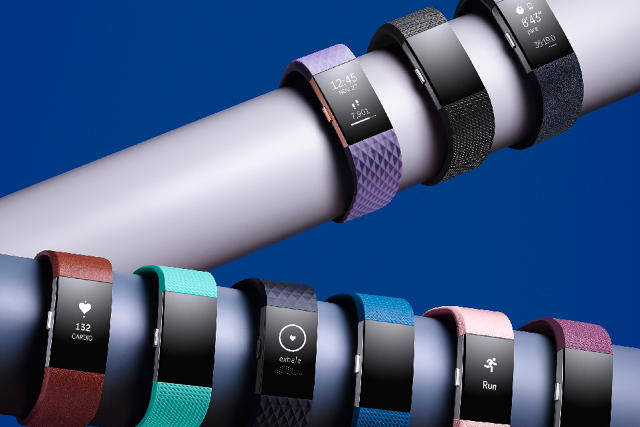
With its new Fitbit Charge 2—one of two fitness bands it’s announcing today—Fitbit aims to let health-minded people get the benefits of such an assessment without feeling the pain even once. A feature called Cardio Fitness Level calculates a VO2 max equivalent by monitoring your heart rate during exercise and then combining that data with other information Fitbit knows about you, such as your weight.
The $150 Charge 2 is a significant upgrade to Fitbit’s best-selling model, the Charge HR, with a display that’s four times larger, swappable bands, and other improvements. For now, the Cardio Fitness Level feature is exclusive to the Charge 2, as is a new guided breathing feature. Both utilize the band’s PurePulse continuous heart-rate monitor, a technology that first shipped in Fitbits early last year.
Simply being able to see your heart rate at a glance, when you’re at rest or working out, and track it over time, is a valuable capability. (And a competitive necessity for Fitbit, given that other wearables such as the Apple Watch also offer it.) With the new cardio and breathing features, the company is using heart-rate data as an ingredient for more ambitious offerings, designed to set the Charge 2 apart from its rivals and get its owners doing a lot more than counting steps and measuring calories burned.
That was the long-term plan for PurePulse all along, explains Shelten Yuen, Fitbit’s VP of research, who joined the company in 2007, well before it shipped its first fitness tracker. “The first thing you need to do is get the sensors out in the world,” he says. “Then you can start to get more meaning out of the data.”
From the Lab to Your Wrist
In April 2011, when Fitbit’s R&D team started working on the technology that became PurePulse, people who wanted to measure their heart rate while exercising generally futzed around with chest straps. In theory, it seemed plausible that a wrist-worn gadget might flash light to detect blood flow under the skin, using a process called photoplethysmography. But it wasn’t entirely clear how you’d make it work accurately and reliably—and continuously, without the wearer having to do anything.
“We basically got RadioShack-type parts, and we just stuck them together with duct tape and strapped them to our arms and started running next to a oscilloscope to see if it was possible to get a heart-rate signal,” says Yuen. It was. Then the company poured effort into turning this science project into something small and power-efficient enough to build into the backside of a fitness band, where it could stay in contact with your wrist throughout the day and night.
Along the way, Fitbit dealt with such intricacies of consumerizing the technology and engineering the fitness band so that it automatically disabled the PurePulse sensor if you removed the band from your wrist. That was important not only to conserve battery life but also to avoid the sensor’s flashing green lights being a room-illuminating irritant if you put the band on your nightstand before retiring for the night.
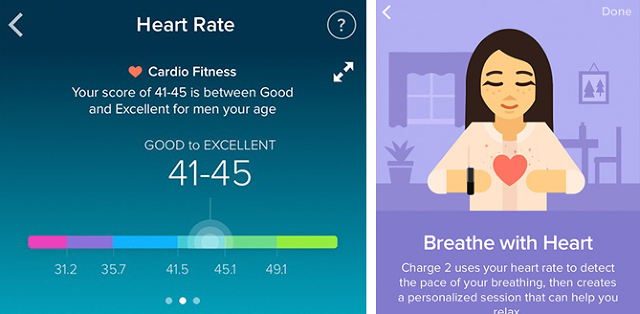
The origins of the Charge 2’s Cardio Fitness Level feature came when Fitbit’s researchers pondered the VO2 max test, which has been around for decades, and asked themselves if it would be possible to approximate a score based on the data a Fitbit could collect. “We have a bunch of sensors now,” says senior research manager Subramaniam Venkatraman. “We have heart rate, we have GPS, and we have a bunch of other information about the user. We know your age, we know your gender, we know your weight. Can we use all of this information together to give you a good estimate of what your cardio fitness looks like? That’s what we built.” And in part by performing almost 100 conventional VO2 max tests like the one I witnessed, the company found that the scores it could generate using the Charge 2 band were indeed comparable to what you’d get if you put on an oxygen mask and ran yourself ragged on a treadmill.
The idea of a wearable device synthesizing a VO2 max score isn’t altogether new: Some Garmin sports watches can do it when coupled with a separate heart-rate monitor, and Microsoft’s Band 2, which shipped last year, offers its own VO2 max feature. But it’s still an emerging concept, with challenges ranging from collecting the data to calculating the score to figuring out how to present the bottom line in a way that makes sense to people who have never heard the term “VO2 max.”
The last thing Fitbit wanted to do was make the whole process feel like a test. “There are a variety of ways in which you could do this experience on a Charge 2,” says Yuen. “You could say, ‘User, you can now get a VO2 max assessment, a cardio fitness assessment. All you have to do is run this distance at this escalated pace,’ very similar to what we’re going to see on a treadmill.”
“Instead, we just say, ‘Go out and run like you’re going to run—just make sure it’s 10-minutes long, and we’ll give you an estimate.’ That’s really all it comes down to. I think trying to find ways to make it as easy as possible for a user, while still maintaining accuracy and precision in the measurement, is part of the art that goes into these devices and these experiences.”
“We spent a lot of time thinking about how to take this rather technical term and make it really approachable and understandable to a large fraction of our users,” adds Venkatraman. Rather than throwing the term “VO2 max” around, the Fitbit app calls it a “Cardio Fitness” score. For additional context, the company also drew on research about VO2 max results for different groups of people to give each user’s score a word rating—such as “Good” or “Excellent”—that compares it against the people of the same gender and age range.
Deep Breaths
As for the Fitbit Charge 2’s new guided breathing feature, it has plenty of company, from an array of breathing apps for iPhones and Androids to a capability that Apple will soon add to the Apple Watch. In all its variants, the basic concept is similar: You get get guided through a restful, meditative session of deep breathing, in and out. But as Fitbit considered how to implement the idea, it concluded that it was less of a commodity than it might seem.
“Someone who’s not done this before, if you set a really slow pace for them, they have a really hard time matching that pace,” says Venkatraman. “Whereas, someone who’s been into yoga for five years, you set that pace for them, and they’re like, ‘This is stupid, that’s too easy for me; I want to do it at a much slower pace.’ It very quickly became obvious to us that this needs to be personalized.”

The Charge 2 sets the duration of each inhale/exhale step based on data about the user’s heart rate collected by the PurePulse sensor. Then it also monitors heart rate to give real-time feedback during the breathing session. “We think of heart rate as a constant number, usually, but that’s not true. It actually varies a lot as you breathe deeply,” says Venkatraman.
As a low-pressure way to indicate that a user is managing to breathe at the personalized pace that the Charge 2 has chosen, Fitbit shows a sparkly little animation effect on the band’s display. “You don’t really want to see a score while you’re trying to calm down.” Venkatraman says with a laugh.
Even as Fitbit built these new cardio and breathing features atop the Charge 2’s heart monitor, it was also refining the PurePulse sensor itself. “We wanted to get the electronics a bit smaller and more power-efficient,” says Yuen. “We actually had to redesign the entire electrical circuit for PurePlus going into the Charge 2 in order to meet those requirements.” The less power-hungry sensor helps the Charge 2 maintain a five-day battery life, even though it uses a smaller battery than previous models.
“If you look all the way from the beginning of Fitbit’s history, we wanted to smash a bunch of different technologies into a really small thing that would have a long battery life,” Yuen says. The vision has kept the company busy for almost a decade, from the era when it wasn’t doing much more than counting steps to today’s PurePulse-enhanced features. And with around half of the company’s research efforts going into “blue-sky investigations,” the Fitbits of the future could incorporate capabilities that currently look as daunting as heart-rate monitoring did a half-decade ago.
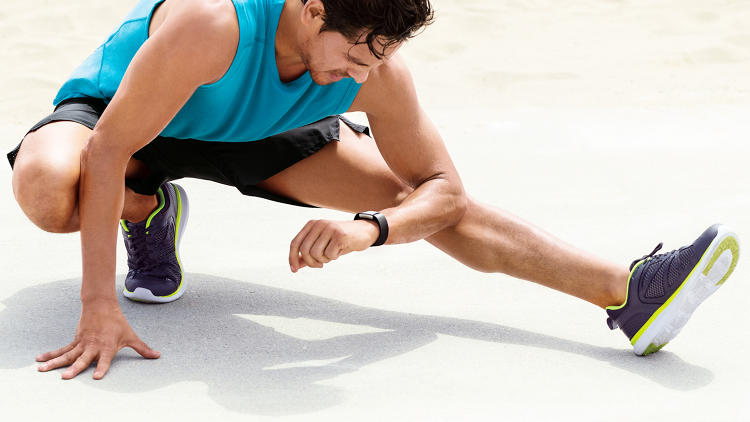
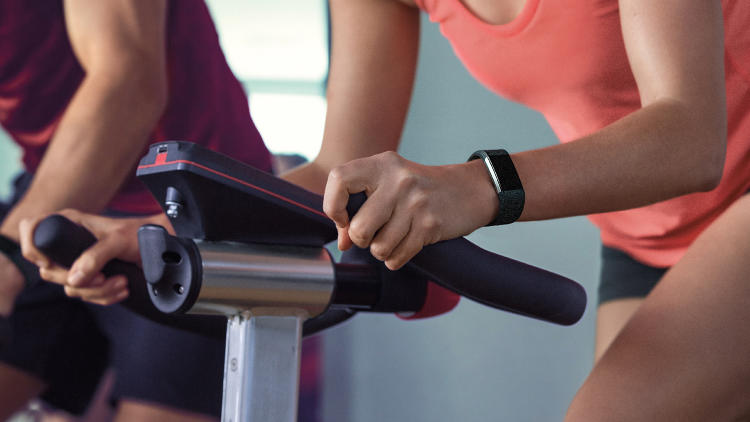


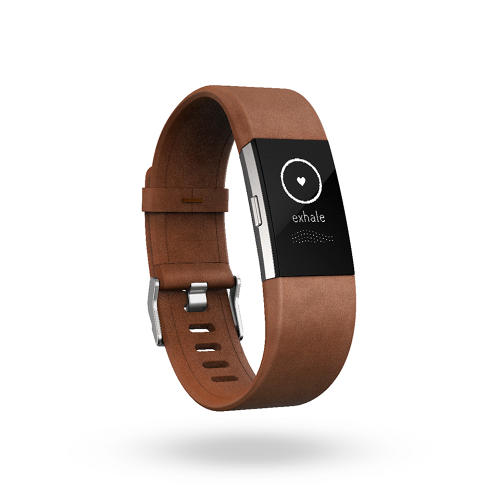
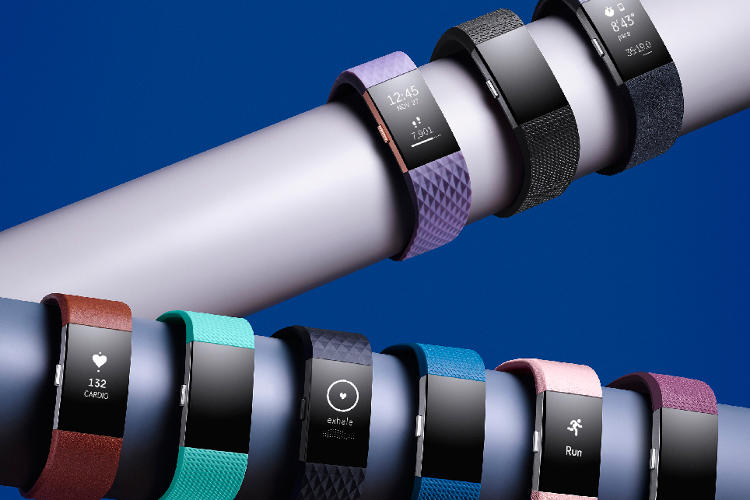
Fast Company , Read Full Story
(18)



